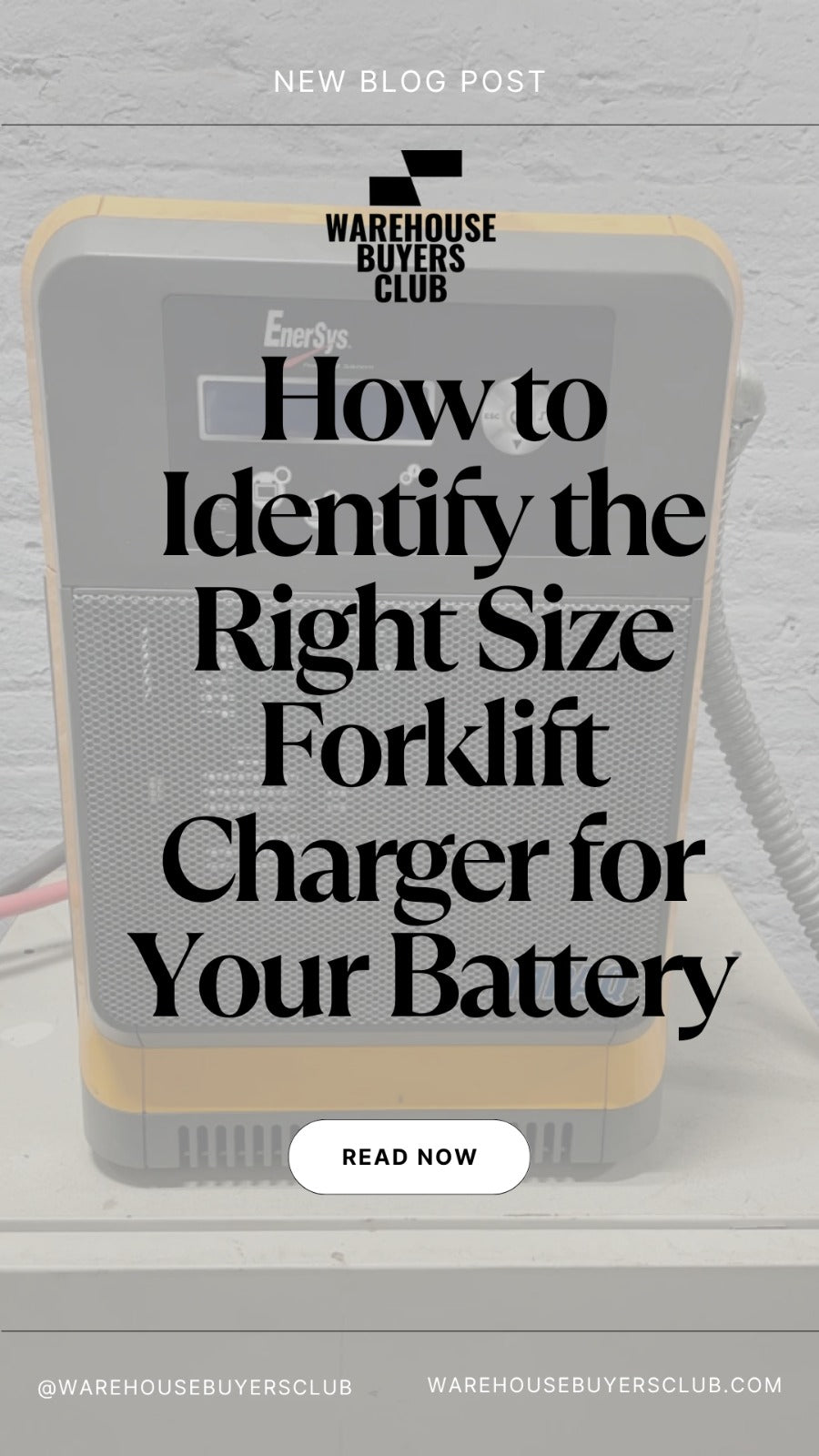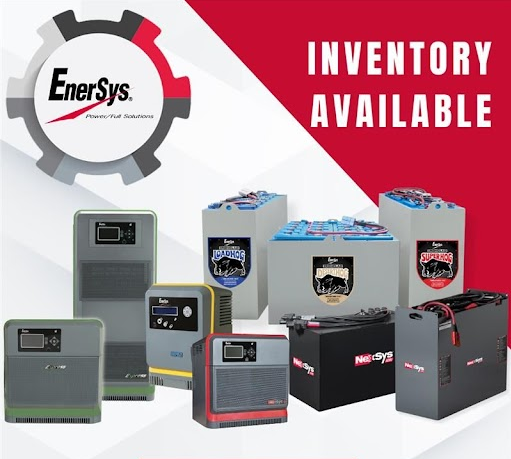How to Identify the Right Size Forklift Charger for Your Battery
By Jeff Hillen, CEO of Warehouse 101
As someone who's spent decades in the warehouse and logistics industry, I've learned firsthand that some of the most overlooked decisions can have the biggest impact on your bottom line. One of those decisions? Choosing the right forklift battery charger.
It might seem like a small detail, especially compared to purchasing a fleet of lifts or managing floor space efficiency. But let me tell you—if your charger doesn’t match your battery, you’re setting yourself up for downtime, higher maintenance costs, and even reduced battery lifespan. Over time, those costs can add up to thousands of dollars.
Let’s walk through how to choose the right size charger for your forklift battery—and why it matters more than you might think.
Start With the Manufacturer's Tag
The very first thing I tell our customers: check the battery’s specification tag. Every forklift battery should come with a nameplate or data tag provided by the manufacturer. This little piece of metal or sticker is your roadmap. It lists everything from voltage (V), amp hours (AH), to the number of cells and model numbers.
If that tag is missing, faded, or hard to read, stop what you’re doing and get in touch with the battery manufacturer. Charging a battery without the right information is like driving cross-country without a map—you might make it, but there’s a good chance you’ll get lost or stranded along the way.
Why Amp Hours Matter
One of the most critical specs on that tag is the amp-hour rating. This tells you how much energy the battery can store—essentially, how long your forklift can run before it needs to recharge. Common industrial forklift batteries are rated anywhere from 300 to 1,200 amp hours, depending on size and usage.
Your charger must match this amp-hour rating appropriately. The goal is to charge the battery fully in 8-10 hours—what’s typically considered a full shift or overnight charge.
What Happens If the Charger Is Too Small?
If your charger doesn’t deliver enough amperage for the battery’s size, charging takes longer. That sounds minor until your shifts start to overlap or your forklift goes offline because the battery didn’t reach a full charge.
Worse, undercharging over a long period can lead to sulfation, where sulfate crystals form on the battery’s plates. This reduces capacity and shortens battery life. I’ve seen operations lose 1-2 years off the life of a battery because they were trickle-charging something that needed more juice.
Think of it like trying to inflate a truck tire with a bike pump. You’ll eventually get there—maybe—but it’s going to take way more time and energy than necessary.
What If the Charger Is Too Big?
Now let’s look at the other side of the coin. If your charger is too powerful, it can overcharge the battery. This might sound like a good thing ("more power, faster charge"), but in reality, overcharging generates excess heat and damages the internal components of the battery.
The electrolyte inside the battery starts to evaporate. Plates corrode. The casing can swell or warp. I've walked into warehouses where you can smell the damage before you see it—that sharp, acidic tang in the air means someone's charger is doing more harm than good.
Overcharging also accelerates water loss, meaning your maintenance team will need to check and refill water more often. Neglecting that step can lead to plate exposure and irreversible damage.
Just Right: Sizing the Charger Properly
The sweet spot is a charger that matches both the voltage and amp-hour rating of your battery. Here's a simple formula you can use:
Battery AH ÷ 8 = Recommended Charger Amperage Output
So, if your battery is 800 amp hours:
800 ÷ 8 = 100-amp charger
That 100-amp charger will fully charge your battery in about 8 hours. If you’re charging faster than that regularly, you’re probably overcharging. If it’s taking 12+ hours, your charger might be too small.
It’s also important to match the voltage—typically 24V, 36V, or 48V in most warehouse operations. A 48V charger won’t work properly on a 36V battery and vice versa. In the best-case scenario, it just won’t charge. In the worst-case scenario, you’ll fry something.
Modern Chargers and Smart Tech
These days, a lot of chargers come with smart charging technology that adjusts output based on the battery’s needs. These can be a great investment, especially if you run a mixed fleet with different battery types. However, even smart chargers need to be configured properly. Don’t assume “smart” means “plug-and-play.” Get it checked.
And don’t forget to monitor battery temperature during charging—some modern chargers come with temperature sensors that can help avoid overheating. It’s a smart safeguard.
Final Thoughts: Long-Term Health Over Short-Term Convenience
At Warehouse 101, we’ve seen firsthand how investing a little time upfront—matching your charger to your battery specs—pays off in the long run. The right charger helps:
-
Extend your battery’s lifespan by 2-3 years
-
Reduce your overall energy consumption
-
Minimize unplanned downtime
-
Improve fleet efficiency across shifts
If you're ever unsure about your charger setup, reach out. Whether you're buying new, replacing old equipment, or just double-checking specs, we’re here to help make sure you get it right. The difference between "close enough" and "exact match" can be thousands of dollars over the life of your equipment.
So next time you're standing in front of a wall of chargers, remember: the right size isn’t just a technical detail—it’s a strategic decision.
Stay charged,
Jeff Hillen
CEO, Warehouse 101




